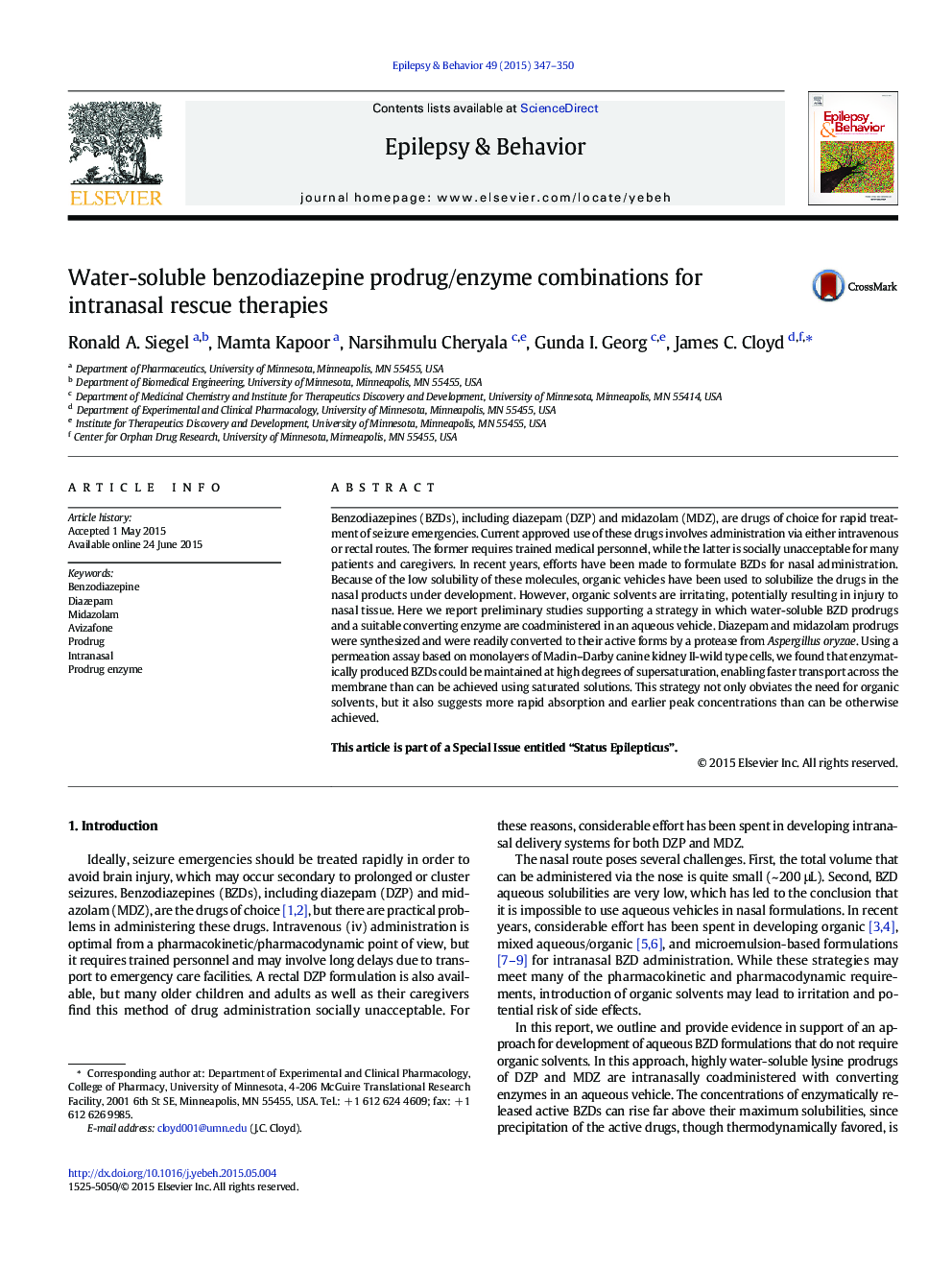| کد مقاله | کد نشریه | سال انتشار | مقاله انگلیسی | نسخه تمام متن |
|---|---|---|---|---|
| 6011230 | 1579840 | 2015 | 4 صفحه PDF | دانلود رایگان |
- Peptide prodrugs of diazepam and midazolam have been synthesized
- An enzyme that converts these prodrugs to their corresponding actives forms has been identified
- An in vitro assay assesses conversion of prodrug to active drug and permeation of active drug across model cell membranes
- Following conversion, the active drugs appear at highly supersaturated concentrations, enabling enhanced flux across the membrane
- The results suggest a means for rapid absorption of benzodiazepines across the nasal mucosa, enabling treatment of seizure emergencies
Benzodiazepines (BZDs), including diazepam (DZP) and midazolam (MDZ), are drugs of choice for rapid treatment of seizure emergencies. Current approved use of these drugs involves administration via either intravenous or rectal routes. The former requires trained medical personnel, while the latter is socially unacceptable for many patients and caregivers. In recent years, efforts have been made to formulate BZDs for nasal administration. Because of the low solubility of these molecules, organic vehicles have been used to solubilize the drugs in the nasal products under development. However, organic solvents are irritating, potentially resulting in injury to nasal tissue. Here we report preliminary studies supporting a strategy in which water-soluble BZD prodrugs and a suitable converting enzyme are coadministered in an aqueous vehicle. Diazepam and midazolam prodrugs were synthesized and were readily converted to their active forms by a protease from Aspergillus oryzae. Using a permeation assay based on monolayers of Madin-Darby canine kidney II-wild type cells, we found that enzymatically produced BZDs could be maintained at high degrees of supersaturation, enabling faster transport across the membrane than can be achieved using saturated solutions. This strategy not only obviates the need for organic solvents, but it also suggests more rapid absorption and earlier peak concentrations than can be otherwise achieved.This article is part of a Special Issue entitled “Status Epilepticus”.
Journal: Epilepsy & Behavior - Volume 49, August 2015, Pages 347-350
